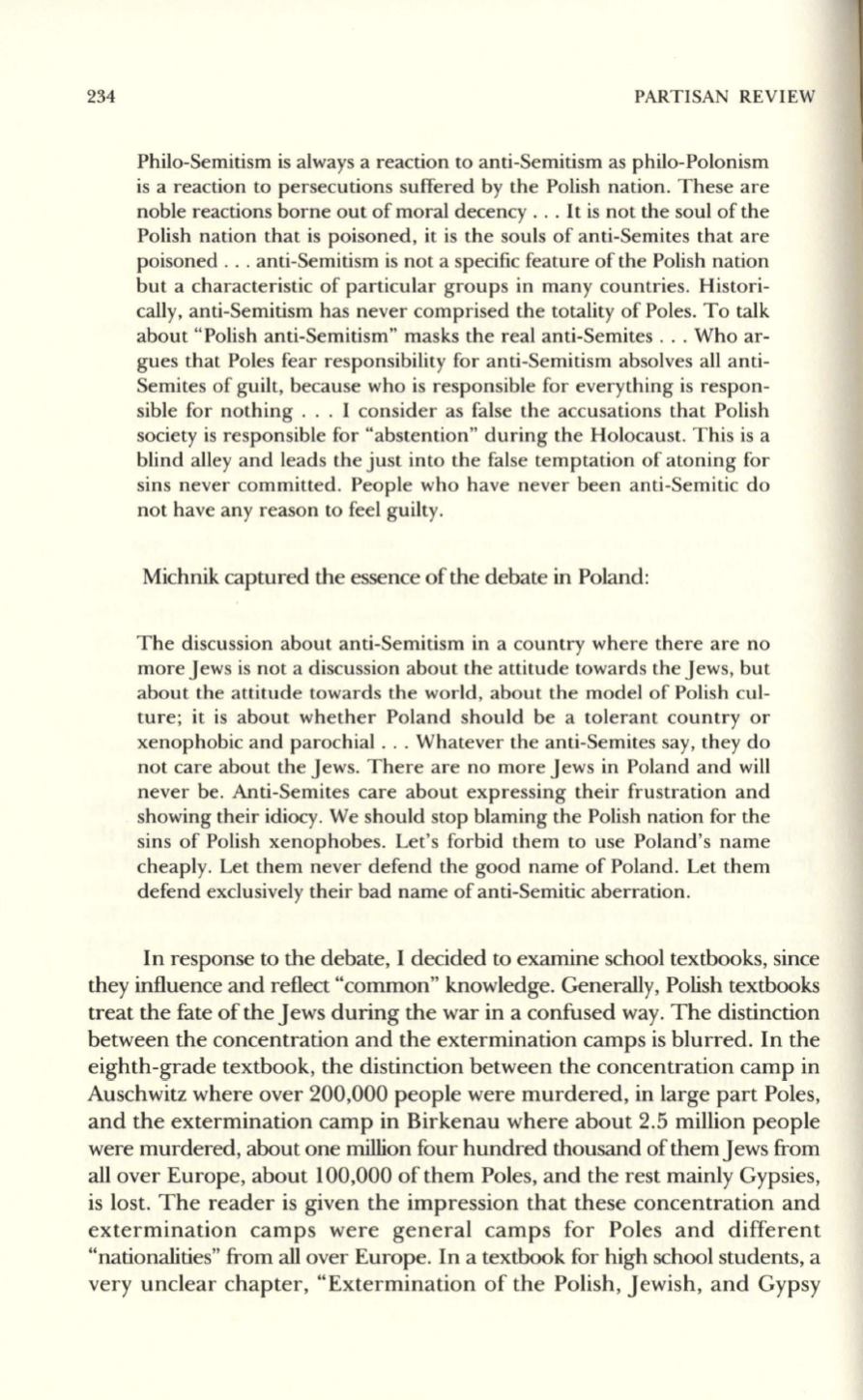
234
PARTISAN REVIEW
Philo-Semitism is always a reaction to anti-Semitism as philo-Polonism
is a reaction to persecutions suffered by the Polish nation. These are
noble reactions borne out of moral decency ...
It
is not the soul of the
Polish nation that is poisoned, it is the souls of anti-Semites that are
poisoned ... anti-Semitism is not a specific feature of the Polish nation
but a characteristic of particular groups in many countries. Histori–
cally, anti-Semitism has never comprised the totality of Poles. To talk
about "Polish anti-Semitism" masks the real anti-Semites . . . Who ar–
gues that Poles fear responsibility for anti-Semitism absolves all anti–
Semites of guilt, because who is responsible for everything is respon–
sible for nothing . . . I consider as false the accusations that Polish
society is responsible for "abstention" during the Holocaust. This is a
blind alley and leads the just into the false temptation of atoning for
sins never committed. People who have never been anti-Semitic do
not have any reason to feel guilty.
Michnik captured the essence of the debate
in
Poland:
The discussion about anti-Semitism in a country where there are no
more Jews is not a discussion about the attitude towards the Jews, but
about the attitude towards the world , about the model of Polish cul–
ture; it is about whether Poland should be a tolerant country or
xenophobic and parochial . .. Whatever the anti-Semites say, they do
not care about the Jews. There are no more Jews in Poland and will
never be. Anti-Semites care about expressing their frustration and
showing their idiocy. We should stop blaming the Polish nation for the
sins of Polish xenophobes. Let's forbid them to use Poland's name
cheaply. Let them never defend the good name of Poland. Let them
defend exclusively their bad name of anti-Semitic aberration.
In response to the debate, I decided to examine school textbooks, since
they influence and reflect "common" knowledge. Generally, Polish textbooks
treat the fate of the Jews during the war in a confused way. The distinction
between the concentration and the extermination camps is blurred. In the
eighth-grade textbook, the distinction between the concentration camp in
Auschwitz where over 200,000 people were murdered, in large part Poles,
and the extermination camp in Birkenau where about 2.5 million people
were murdered, about one million four hundred thousand of themJews from
allover Europe, about 100,000 of them Poles, and the rest mainly Gypsies,
is lost. The reader is given the impression that these concentration and
extermination camps were general camps for Poles and different
"nationalities" from all over Europe. In a textbook for high school students, a
very unclear chapter, "Extermination of the Polish, Jewish, and Gypsy


